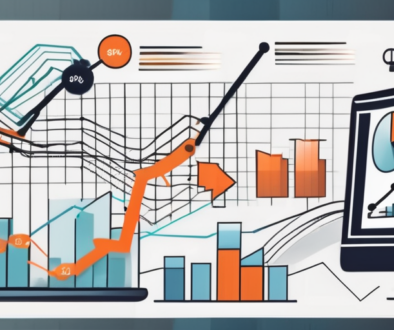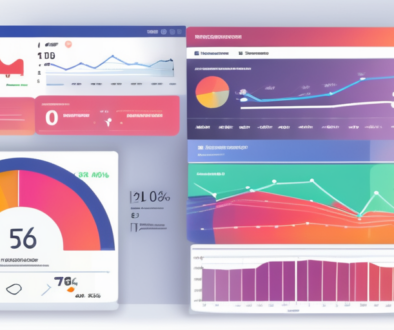ROI Mastery: Achieving Maximum Value from Your Paid Media Campaigns
In the fast-paced world of digital marketing, understanding how to effectively leverage paid media is crucial for businesses seeking to boost their return on investment (ROI). This comprehensive guide will delve into the intricacies of paid media, the importance of ROI, and strategies for maximizing your investment. By the end of this article, you will have a clear roadmap for enhancing your paid media campaigns and their associated returns.
Understanding the Basics of Paid Media
Defining Paid Media and Its Importance
Paid media refers to any form of advertising that requires payment to place promotional content in front of an audience. This can include search engine ads, social media ads, display advertising, and even sponsored content. In contrast to organic marketing efforts, which rely on unpaid strategies like SEO, paid media offers immediate visibility and reach.
The importance of paid media lies in its ability to drive targeted traffic to websites or campaigns in a relatively short amount of time. By carefully selecting your target demographics and crafting compelling ads, you can ensure that your products or services are seen by those who are most likely to convert. This immediacy is particularly crucial for businesses looking to capitalize on seasonal trends or special promotions, where timing can significantly impact sales outcomes.
Additionally, paid media provides valuable data and insights that can inform future marketing strategies. By analyzing the performance of different ads, marketers can identify which messages resonate with their audience, allowing for continuous optimization of campaigns. This data-driven approach not only enhances the effectiveness of current efforts but also helps in refining overall marketing strategies for long-term success.
The Role of Paid Media in Marketing Strategy
Paid media plays a critical role in a successful marketing strategy. It complements organic efforts, offering a dual approach that can enhance overall visibility. While organic marketing takes time to build momentum, paid campaigns can generate immediate results.
Moreover, paid media allows for precise targeting, enabling marketers to reach specific audience segments. This can be particularly beneficial for businesses launching new products or seeking to capture market share in competitive industries. By integrating paid media into a broader marketing strategy, companies can achieve a well-rounded and effective approach. For instance, a brand may utilize paid search ads to attract users actively searching for their products while simultaneously employing social media ads to build brand awareness among potential customers who may not yet be familiar with their offerings.
Furthermore, the versatility of paid media allows for experimentation with various formats and platforms, from video ads on streaming services to interactive ads on social media platforms. This flexibility not only keeps the audience engaged but also allows brands to adapt quickly to changing market dynamics. As consumer behaviors evolve, businesses can pivot their paid media strategies to align with emerging trends, ensuring they remain relevant and competitive in an ever-changing landscape.
The Concept of Return on Investment (ROI)
The Importance of ROI in Paid Media
Return on investment (ROI) is a key performance indicator that measures the profitability of an investment relative to its cost. In the realm of paid media, calculating ROI allows marketers to assess how effectively their advertising dollars are being utilized. It answers the crucial question: “Are we generating enough revenue to justify our advertising spend?”
Understanding ROI is vital for guiding budget allocation and strategic decisions. High ROI indicates successful campaigns that could warrant additional investment, while poor ROI reveals the need for reevaluation of tactics or spending. For businesses looking to maximize their growth, keeping a close eye on ROI is indispensable. Moreover, a strong grasp of ROI can help marketers identify which channels are performing best, allowing for more targeted and efficient advertising strategies. This insight not only aids in optimizing current campaigns but also informs future marketing endeavors, ensuring that resources are allocated to the most effective platforms.
Calculating ROI for Paid Media Campaigns
Calculating ROI for paid media campaigns involves a straightforward formula: ROI = (Net Profit / Cost of Investment) x 100. To derive net profit, subtract the cost of advertising from the revenue generated through the campaign.
For instance, if a business spends $2,000 on a paid media campaign and generates $10,000 in revenue, the net profit would be $8,000. Thus, the ROI is calculated as follows:
- Net Profit = $10,000 – $2,000 = $8,000
- ROI = ($8,000 / $2,000) x 100 = 400%
Understanding and regularly calculating ROI empowers marketers to make informed decisions about their campaign strategies and expenditures. However, it is also crucial to consider the time frame of the investment. A campaign may show a high ROI in the short term but might not sustain that level of profitability over a longer period. Therefore, analyzing trends over time can provide deeper insights into the effectiveness of paid media efforts. Additionally, incorporating metrics such as customer lifetime value (CLV) into the ROI calculation can yield a more comprehensive view of the true return on marketing investments, as it accounts for the long-term value generated by customers acquired through paid media campaigns.
Strategies for Maximizing Paid Media ROI
Choosing the Right Platforms for Paid Media
One of the most significant factors influencing paid media ROI is the choice of platforms. Different platforms cater to various audiences and have unique advertising capabilities. Popular channels include Google Ads, Facebook, Instagram, Twitter, and LinkedIn.
To choose the right platform, consider the demographics of your target audience and the nature of your product or service. For example, visually-oriented products may perform better on Instagram, while B2B services might see more success on LinkedIn. Testing multiple platforms can help identify which yields the best results. Additionally, it’s important to stay updated on emerging platforms and trends, as new channels can provide untapped opportunities for reaching niche audiences. Platforms like TikTok and Snapchat, for instance, have rapidly gained popularity, especially among younger demographics, and can offer unique advertising formats that engage users in innovative ways.
Optimizing Ad Spend for Better ROI
Effective ad spend optimization involves a multitude of strategies designed to enhance performance without overspending. This can include A/B testing of ad copy and images, adjusting bids based on performance metrics, and using retargeting ads to re-engage users who previously interacted with your content.
Additionally, utilizing demographic and psychographic data to refine audience targeting can lead to a more efficient allocation of budget resources. By closely monitoring campaign performance and making adjustments as needed, marketers can ensure they are getting the most out of their advertising spend. Furthermore, implementing automation tools can streamline the optimization process. These tools can analyze vast amounts of data in real-time, allowing for quicker adjustments to bids and targeting based on performance trends. This not only saves time but also enhances the ability to respond to market changes swiftly, ensuring that campaigns remain relevant and effective in achieving desired outcomes.
Analyzing and Interpreting Paid Media ROI
Key Metrics for ROI Analysis
In order to analyze paid media ROI effectively, it’s essential to track several critical metrics. Some of these include:
- Cost per Click (CPC): The average cost paid for each click on your ad.
- Click-Through Rate (CTR): The percentage of viewers who click on your ad compared to the number of impressions.
- Conversion Rate: The ratio of conversions to total visitors reached via the paid ad.
- Customer Acquisition Cost (CAC): The total cost of acquiring a new customer through paid media.
By analyzing these metrics regularly, businesses can refine their strategies and improve ROI over time, ensuring that each campaign is maximizing its potential impact. Additionally, it’s important to consider the lifetime value of a customer (LTV) when assessing ROI. Understanding how much revenue a customer generates throughout their relationship with your brand can provide deeper insights into the effectiveness of your paid media efforts. A high LTV relative to CAC can indicate a healthy return on investment, prompting businesses to scale successful campaigns further.
Utilizing Analytics Tools for ROI Evaluation
Analytics tools are vital for conducting a comprehensive ROI analysis of paid media campaigns. Platforms like Google Analytics, Facebook Ads Manager, and others provide insights that help marketers understand user behavior and conversion pathways.
These tools allow businesses to set up tracking codes that measure interactions and conversions stemming from paid media efforts. By utilizing segmentation and filtering features, marketers can gain actionable insights and optimize campaigns accordingly. Analyzing this data helps inform future decisions, ensuring continuous improvement of paid media strategies. Furthermore, integrating these analytics tools with customer relationship management (CRM) systems can enhance the understanding of customer journeys. This integration allows for a more holistic view of how paid media influences not just immediate conversions, but also long-term customer engagement and retention. By examining the interplay between paid media efforts and customer interactions across various touchpoints, businesses can craft more tailored and effective marketing strategies that resonate with their target audience.
Improving Your Paid Media ROI
Best Practices for Enhancing ROI
To continually improve paid media ROI, consider implementing best practices such as:
- Setting clear objectives: Establish measurable goals before launching campaigns.
- Continuously monitoring performance: Regularly check metrics and make real-time adjustments.
- Creating high-quality, targeted content: Ensure that ad content is relevant and engaging to the target audience.
- Leveraging remarketing: Use retargeting strategies to bring back users who showed initial interest.
By adhering to these best practices, businesses can foster a more productive environment for their paid media initiatives, leading to improved ROI. Additionally, it is crucial to invest in audience segmentation. By understanding the different segments of your target audience, you can tailor your messaging and offers to meet their specific needs and preferences. This level of personalization not only enhances engagement but also increases the likelihood of conversions, further boosting your ROI.
Moreover, consider the timing of your campaigns. Analyzing historical data can help you identify peak times when your audience is most active and likely to engage with your ads. By strategically scheduling your campaigns around these times, you can maximize visibility and interaction, ultimately leading to better performance and higher returns.
Avoiding Common Pitfalls in Paid Media Campaigns
While there are numerous strategies to enhance paid media performance, being aware of common pitfalls is just as important. Issues such as poor targeting, lack of A/B testing, and neglecting to adjust campaigns based on performance metrics can severely impact ROI.
Another common mistake is failing to set a proper budget or timeframe for campaigns. Advertisers should ensure they allocate resources thoughtfully and understand that adjustments may need to be made along the way based on real-time performance data. It’s also essential to avoid the trap of over-relying on a single platform. Diversifying your paid media efforts across multiple channels can help mitigate risks and tap into different audience segments, enhancing overall campaign effectiveness.
Furthermore, many advertisers overlook the importance of creative testing. Regularly experimenting with different ad formats, visuals, and copy can provide valuable insights into what resonates best with your audience. This iterative approach not only helps in refining your campaigns but also keeps your content fresh and engaging, preventing ad fatigue among viewers.
Ultimately, avoiding these pitfalls and maintaining a proactive approach towards campaign management will result in more favorable ROI outcomes. By continuously learning from both successes and failures, marketers can adapt their strategies to the ever-evolving digital landscape, ensuring their paid media efforts remain effective and profitable.



